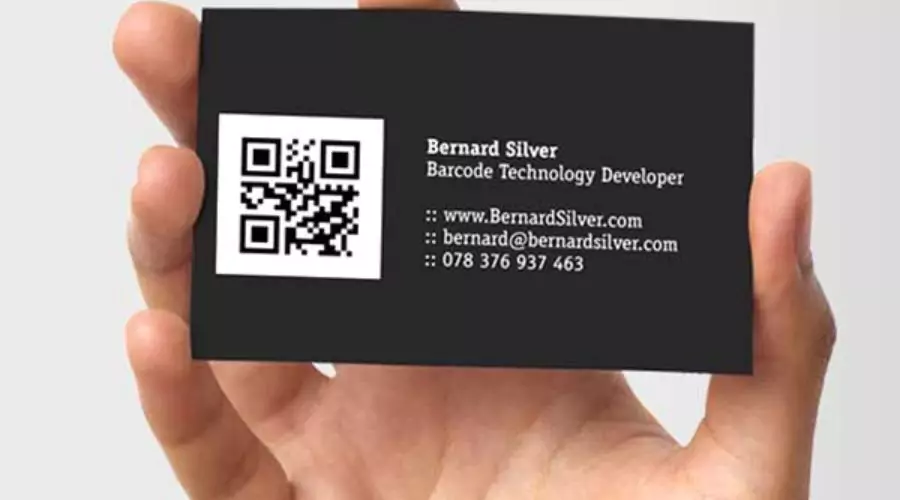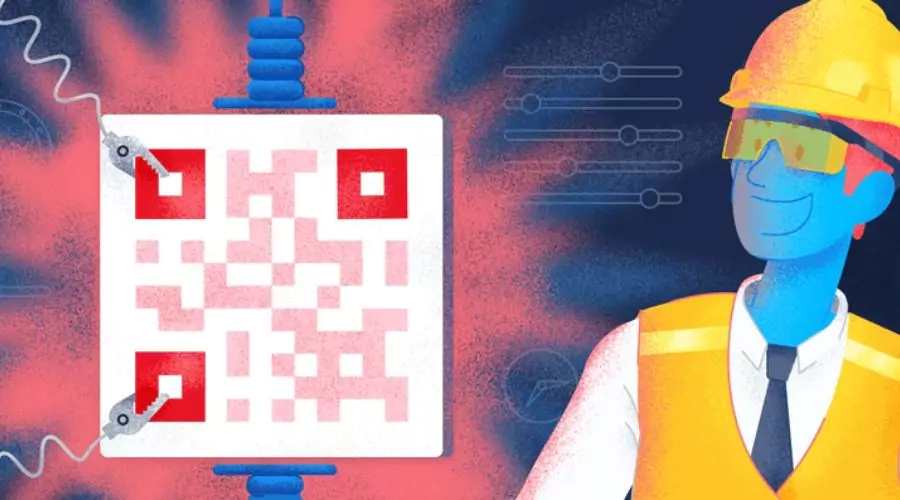Ever required to share a link or a few information rapidly, but didn’t need to deal with the hassle of typing it out? That’s where free QR code makers come in convenient. These nifty online instruments let you whip up those funky-looking square barcodes in no time, without investing a dime. Whether you are a little business owner attempting to jazz up your showcasing or just somebody who needs an easy way to share your Wi-Fi password with guests, these free QR code makers have got you secured. No tech wizardry is required – just some clicks, and you’ve got yourself a QR code prepared to go.
What are QR Codes?

What are QR Codes? | Hitrendsetter
So, QR codes are these funky square barcodes you’ll be able to scan with your phone or a special gadget. They’re like regular barcodes on steroids – way more information stuffed into a little space. Whereas old-school barcodes can only hold a bit of information in one heading, QR codes cram in tons more stuff from all angles. Instead, QR codes can hold data both horizontally and vertically.
Understanding How QR Codes Work

Understanding How QR Codes Work | Hitrendsetter
1. Anatomy of a QR Code
- Finder Patterns: Three large squares in the corners that help scanners locate the QR code.
- Alignment Patterns: Smaller squares throughout the code that help correct for distortion.
- Timing Patterns: Alternating black and white modules that help determine cell size.
- Version Information: Specifies which version of the QR code is being used.
- Data and Error Correction Keys: The actual information encoded in the QR code.
- Quiet Zone: The blank margin around the QR code, crucial for proper scanning.
2. Encoding Process
- Data Analysis: The input data is analysed to determine the most efficient encoding mode.
- Data Encoding: Information is converted into a binary string.
- Error Correction: Additional data is added to allow for successful scanning even if parts of the code are damaged.
- Structure Final Message: The data is arranged in the final sequence.
- Module Placement: The binary data is converted into the black and white modules of the QR code.
- Masking Pattern: A pattern is applied to ensure optimal scalability.
- Format and Version Information: Final details are added to complete the QR code.
3. Scanning Process
- Image Capture: A device’s camera captures an image of the QR code.
- Localisation: The device identifies the QR code within the image using the finder patterns.
- Alignment and Sampling: The image is adjusted for size and angle.
- Digitisation: The image is converted into digital data.
- Decoding: The digital data is interpreted to extract the encoded information.
- Error Correction: Any errors in the data are corrected using the error correction data.
- Data Presentation: The decoded information is presented to the user or used to trigger an action.
Types of Free QR Code Makers and Their Applications

Types of Free QR Code Makers and Their Applications | Hitrendsetter
1. Static vs. Dynamic QR Codes
- Static QR Codes: These have fixed content that cannot be altered after creation. They are perfect for permanent information such as contact details or URLs that do not change.
- Dynamic QR Codes: Content in these codes can be updated without changing the code itself. They are ideal for promotional campaigns or information that frequently changes, offering tracking and analytics capabilities.
2. Types Based on Content
- URL QR Codes: Direct users to websites or specific web pages, commonly used in print advertising.
- vCard QR Codes: Share contact information easily, ideal for business cards.
- Plain Text QR Codes: Display simple text messages, useful for short promotions or product details.
- Email QR Codes: Compose pre-filled emails, handy for customer feedback or support.
- SMS QR Codes: Send pre-composed text messages, often used in contests or subscriptions.
- Wi-Fi QR Codes: Automatically connect devices to Wi-Fi networks, convenient for businesses offering guest access.
- Location QR Codes: Provide geographic coordinates for navigation and location marking.
- Event QR Codes: Add events to calendars, perfect for marketing events and reminders.
- Payment QR Codes: Facilitate financial transactions, widely used in mobile payment systems.
- App Store QR Codes: Direct users to app download pages, simplifying app installations.
- Social Media QR Codes: Link to social media profiles, encouraging followers and engagement.
- Video QR Codes: Link to video content, enhancing printed materials with multimedia.
3. Advanced QR Code Types
- Encrypted QR Codes: Contain encrypted information for heightened security, used in sensitive applications like ticketing.
- Artistic QR Codes: Incorporate logos or designs while maintaining scanability, blending aesthetics with functionality.
- Micro QR Codes: Smaller versions suitable for limited space, such as on product labels.
- Frame QR Codes: Include customisable frames around the QR code, offering context or instructions.
- Colour QR Codes: Utilize multiple colours while ensuring scanning contrast, enhancing visual appeal and brand alignment.
Benefits of Using a Free QR Code Maker in Various Industries

Free qr code maker | Hitrendsetter
- Retail and E-commerce: QR codes are making shopping way less demanding. Scan to pay, check out item information, or reorder stuff fast. They help verify pricey buys and some even let you attempt things on for all intents and purposes. Pretty convenient, right?
- Marketing and Advertising: They facilitate the tracking of marketing effectiveness, provide additional content in advertisements, communicate with customers, organise contests with ease, and link online and offline promotions.
- Education: QR codes aid learning with extra resources, enhance museum visits, share presentations easily, track attendance, and make learning fun with games.
- Healthcare: In healthcare, they manage patient data, provide medication info, track equipment, access records, and allow contactless check-ins at clinics.
- Hospitality and Tourism: QR codes speed up hotel check-ins, display restaurant menus digitally, guide tours in museums, offer travel info, and provide multilingual details for tourists.
- Manufacturing and Logistics: They track inventory, authenticate products, guide assembly, log equipment maintenance, and ensure transparency in supply chains.
- Events and Entertainment: QR codes manage tickets, engage event audiences, share schedules and maps, offer virtual event bags, and integrate with social media for live updates.
- Real Estate: They give property details, offer virtual property tours, schedule viewings, calculate mortgages, and provide neighbourhood information.
- Automotive Industry: QR codes share vehicle specs, schedule services, access manuals, track parts, and arrange test drives.
- Banking and Finance: They streamline loan applications, locate locations and ATMs, offer digital statements, safeguard transactions, and allow access to accounts.
Conclusion
The free QR code maker offered by Shopify is an effective tool for companies trying to improve consumer interaction and optimise workflow. Shopify gives users the ability to quickly and easily create QR codes, which enables businesses in a variety of industries to adopt creative solutions. Shopify’s free QR code maker provides a user-friendly solution suited to contemporary business needs, whether it’s for streamlining inventory management, boosting marketing campaigns, or boosting customer support with contactless interactions. Because of its seamless functionality and interaction with the Shopify ecosystem, businesses can create dynamic QR code strategies that promote growth and improve consumer experiences in the current digital world.
For more information on free QR code makers, visit Hitrendsetter.





